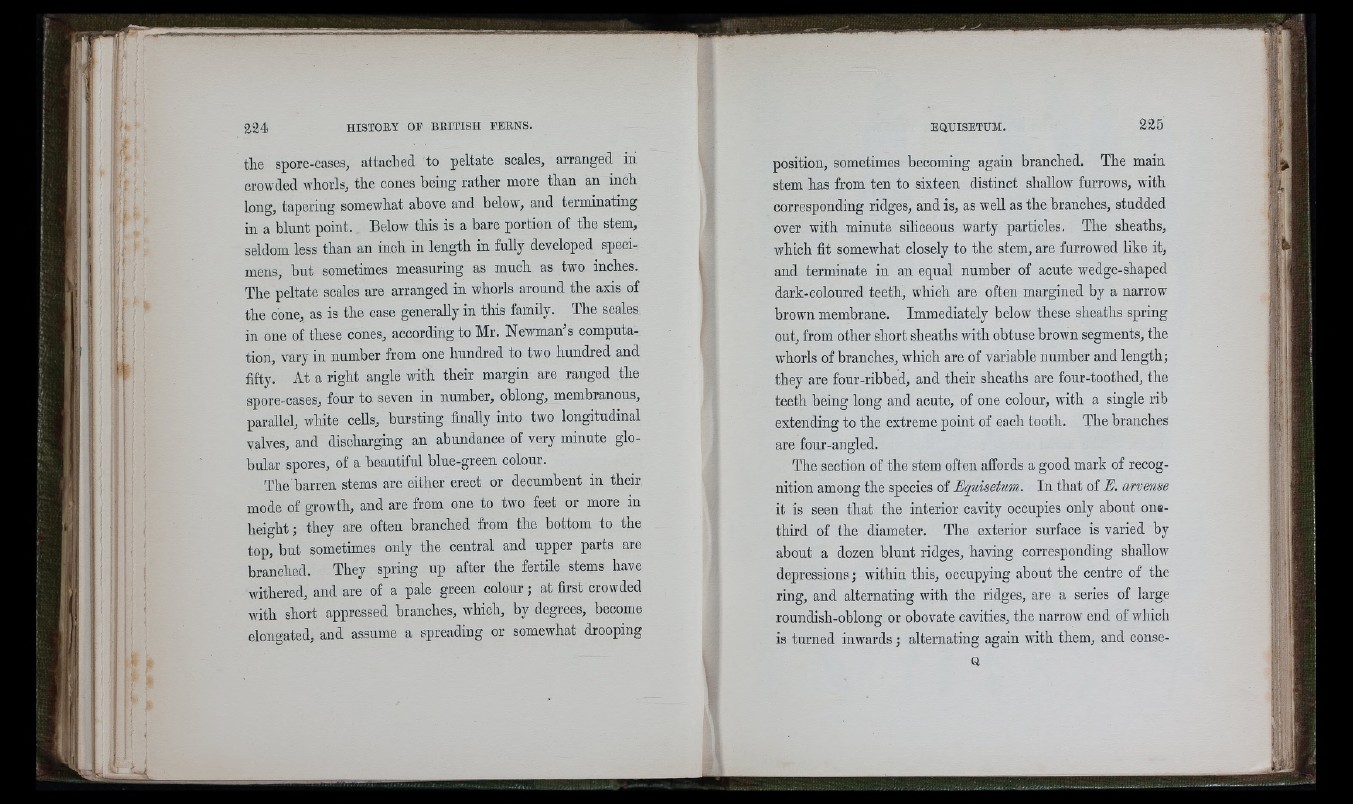
i f: ;
■ |! ;
\l ,r
"(, i■ iJ
': •. '1i
’ !
!
if t
the spore-cases, attached to peltate scales, arranged in
crowded whorls, the cones being rather more than an inch
long, tapering somewhat above and below, and terminating
in a blnnt point. Below this is a bare portion of the stem,
seldom less than an inch in length in fully developed specimens,
but sometimes measuring as much as two inches.
The peltate scales are arranged in whorls around the axis of
the cone, as is the case generally in this family. The scales
in one of these cones, according to Mr. Newman’s computation,
vary in number from one hundred to tw'o hundred and
fifty. At a right angle with their margin are ranged the
spore-cases, four to. seven in number, oblong, membranous,
parallel, white cells, bursting finally into two longitudinal
valves, and discharging an abundance of very minute globular
spores, of a heantifnl blue-green colour.
The barren stems are either erect or decumbent in their
mode of growth, and are from one to two feet or more in
height; they are often branched from the bottom to the
top, but sometimes only the central and upper parts are
branched. They spring up after the fertile stems have
withered, and are of a pale green colour; at first crowded
with short appressed branches, which, by degrees, become
elongated, and assume a spreading or somewhat drooping
position, sometimes becoming again branched. The main
stem has from ten to sixteen distinct shallow furrows, with
corresponding ridges, and is, as well as the branches, studded
over with minute siliceous warty particles. The sheaths,
which fit somewhat closely to the stem, are furrowed hke it,
and terminate in an equal number of acute wedge-shaped
dark-coloured teeth, which are often margined by a narrow
brown membrane. Immediately below these sheaths spring
out, from other short sheaths with obtuse brown segments, the
whorls of branches, which are of variable number and length;
they are four-ribbed, and their sheaths are four-toothed, the
teeth being long and acute, of one colour, with a single rib
extending to the extreme point of each tooth. The branches
are four-angled.
The section of the stem often affords a good mark of recognition
among the species of Equisetum. In that of E. arvense
it is seen that the interior cavity occupies only about one-
third of the diameter. The exterior surface is varied by
about a dozen blunt ridges, having corresponding shallow
depressions; within this, occupying about the centre of the
ring, and alternating with the ridges, are a series of large
roundish-oblong or obovate cavities, the narrow end of whicli
is turned inwards ; alternating again with them, and conse-
Q